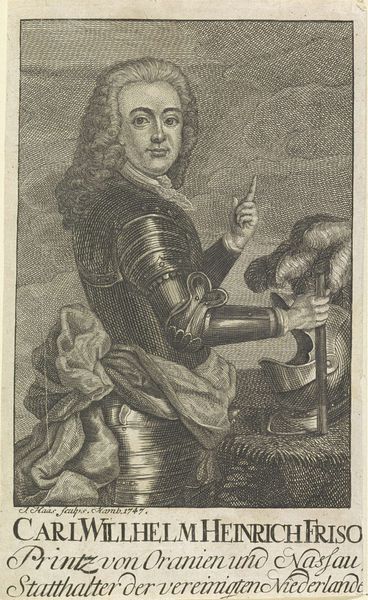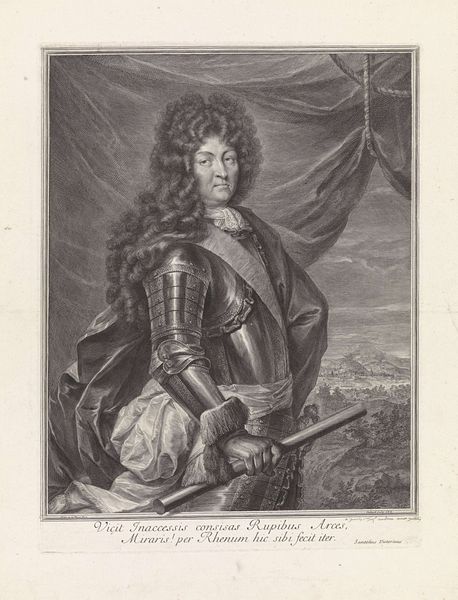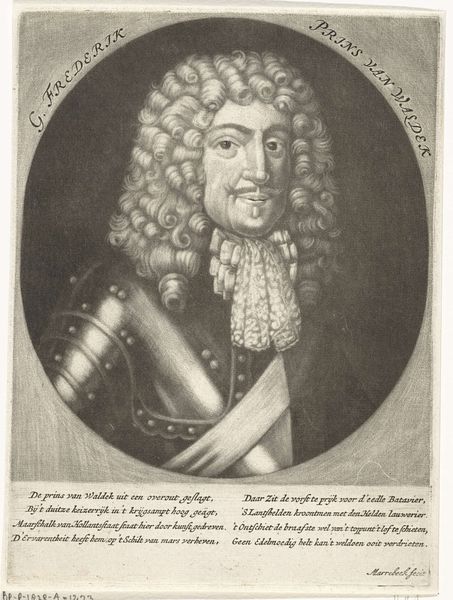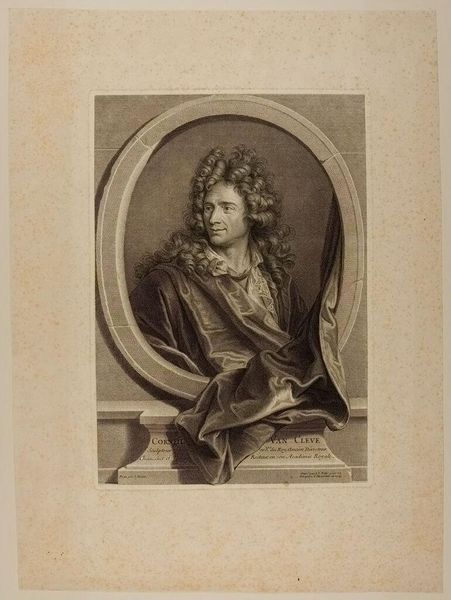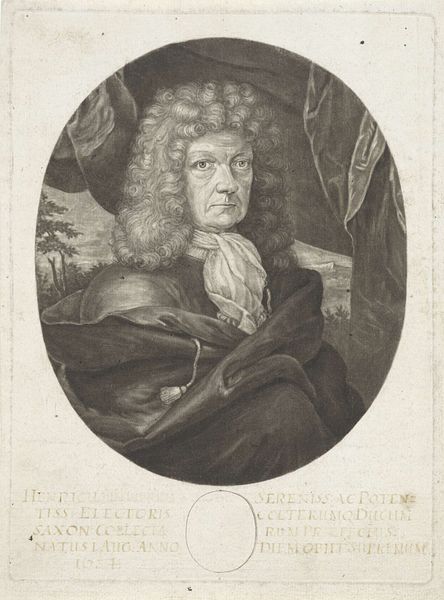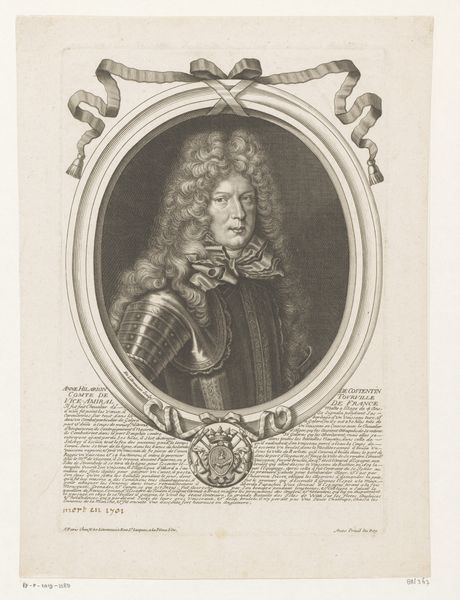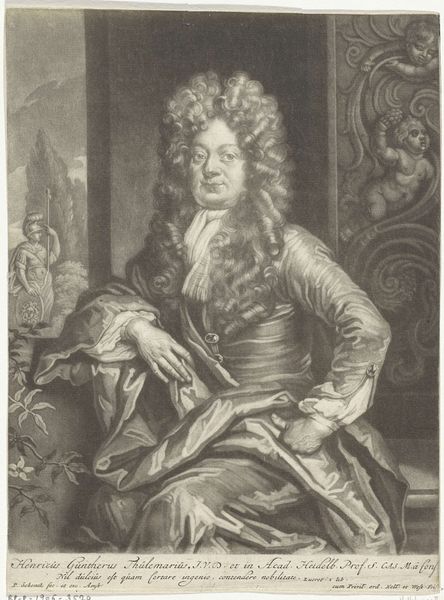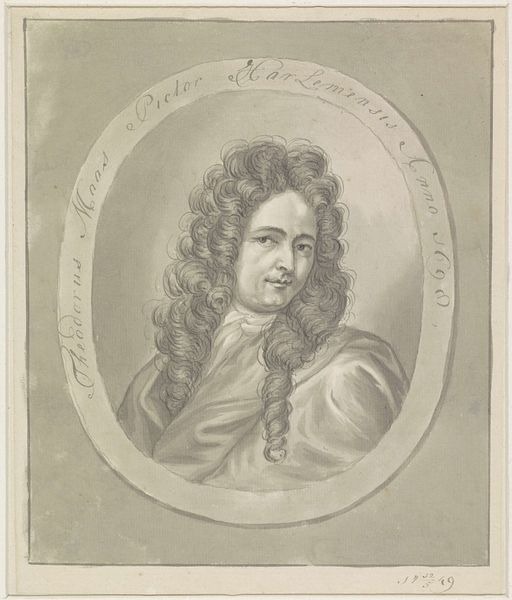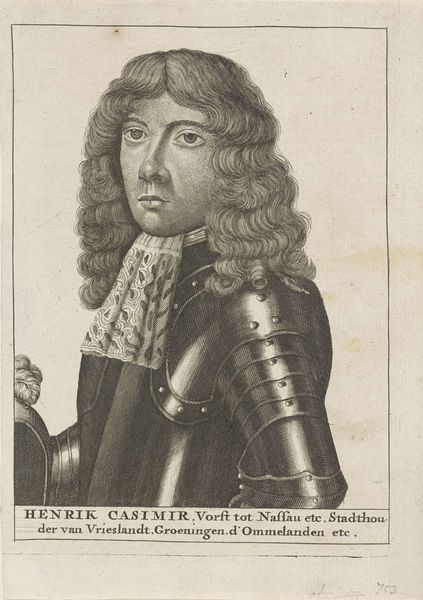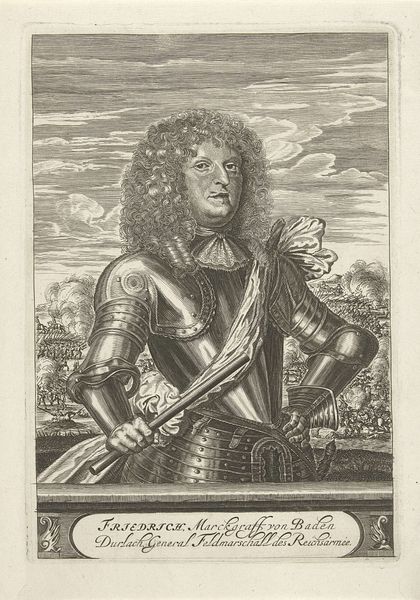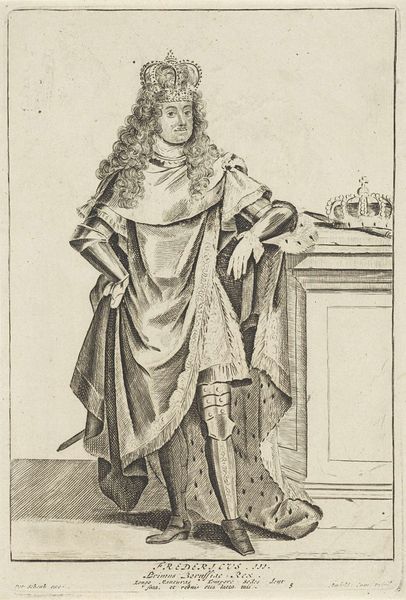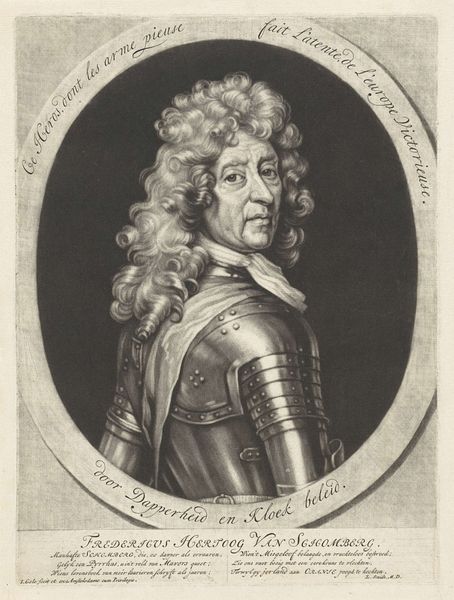
print, engraving
#
portrait
# print
#
old engraving style
#
line
#
history-painting
#
engraving
Dimensions: height 107 mm, width 85 mm
Copyright: Rijks Museum: Open Domain
Curator: Here we have an engraving from the 19th century entitled "Portret van Willem III, prins van Oranje," attributed to an anonymous artist. Editor: My immediate reaction is to the intricate line work—it creates such a dense, almost overwhelming visual texture, especially in the rendering of the wig. It's almost Baroque in its excess. Curator: That wig, of course, signifies status, tied to the court of Louis XIV, becoming a potent symbol of power and wealth throughout Europe. Its mass production and distribution also say something about the era’s evolving notions of luxury and access. Editor: Precisely! The sheer volume of the hair draws the eye upwards, directing our gaze towards the subject's face. It uses formal compositional techniques to underscore status, even without overt markers of royalty. Notice how his gaze intersects the viewer's space directly; such confident, forthright directness is meant to leave no room for doubt. Curator: The engraving as a medium is significant too. Prints like these democratized the image of Willem III, allowing for wider circulation and, in turn, bolstering his public image and the ideals he represented, a new type of celebrity molded by new methods of mechanical reproduction. Consider who consumed these prints, what spaces did they occupy? Editor: It’s all a very clever use of form and material to portray political importance. The choice of sharp lines emphasizes detail, particularly on his armor. This conveys the image of a ruler ready to defend his nation. It is an efficient method for visually embodying power and the ruler's dedication to maintaining sovereignty. Curator: The somewhat stark, almost clinical, nature of the engraving flattens some of the romantic heroism usually assigned to portraits. The stark materiality pushes beyond romantic notions toward political realities, a visual rhetoric about a ruler crafted within reach of ordinary people. Editor: An astute point! It also reveals a commitment to realistic visual construction as a way to convey a person’s place within societal and power structures through accessible artistic strategies. It is quite fascinating to see those strategies function across different interpretive lenses. Curator: Exactly. Each element contributes to the grand project of producing royal image, disseminated and consumed widely. Editor: Truly, this image has more to teach than it initially seems.
Comments
No comments
Be the first to comment and join the conversation on the ultimate creative platform.
